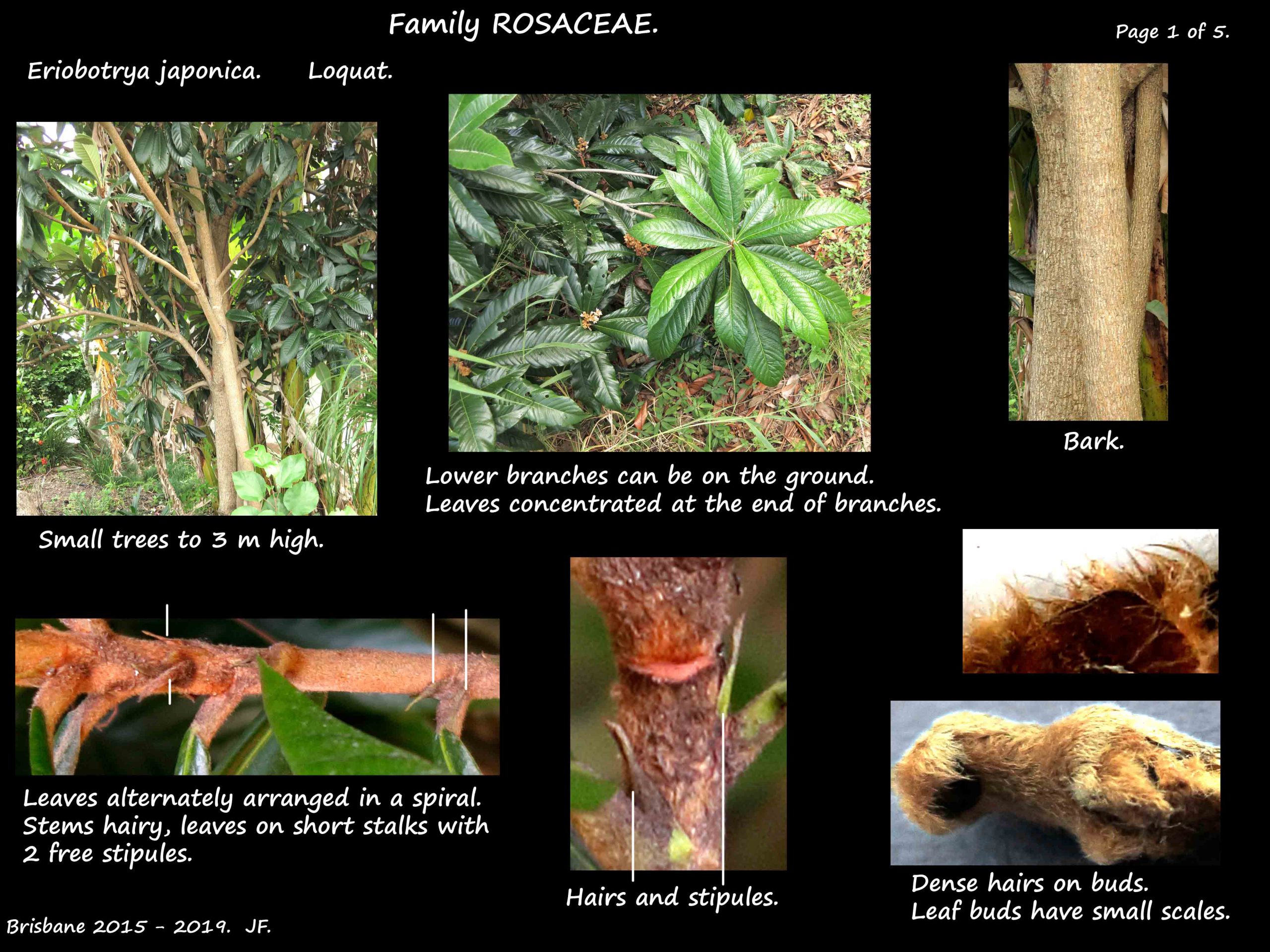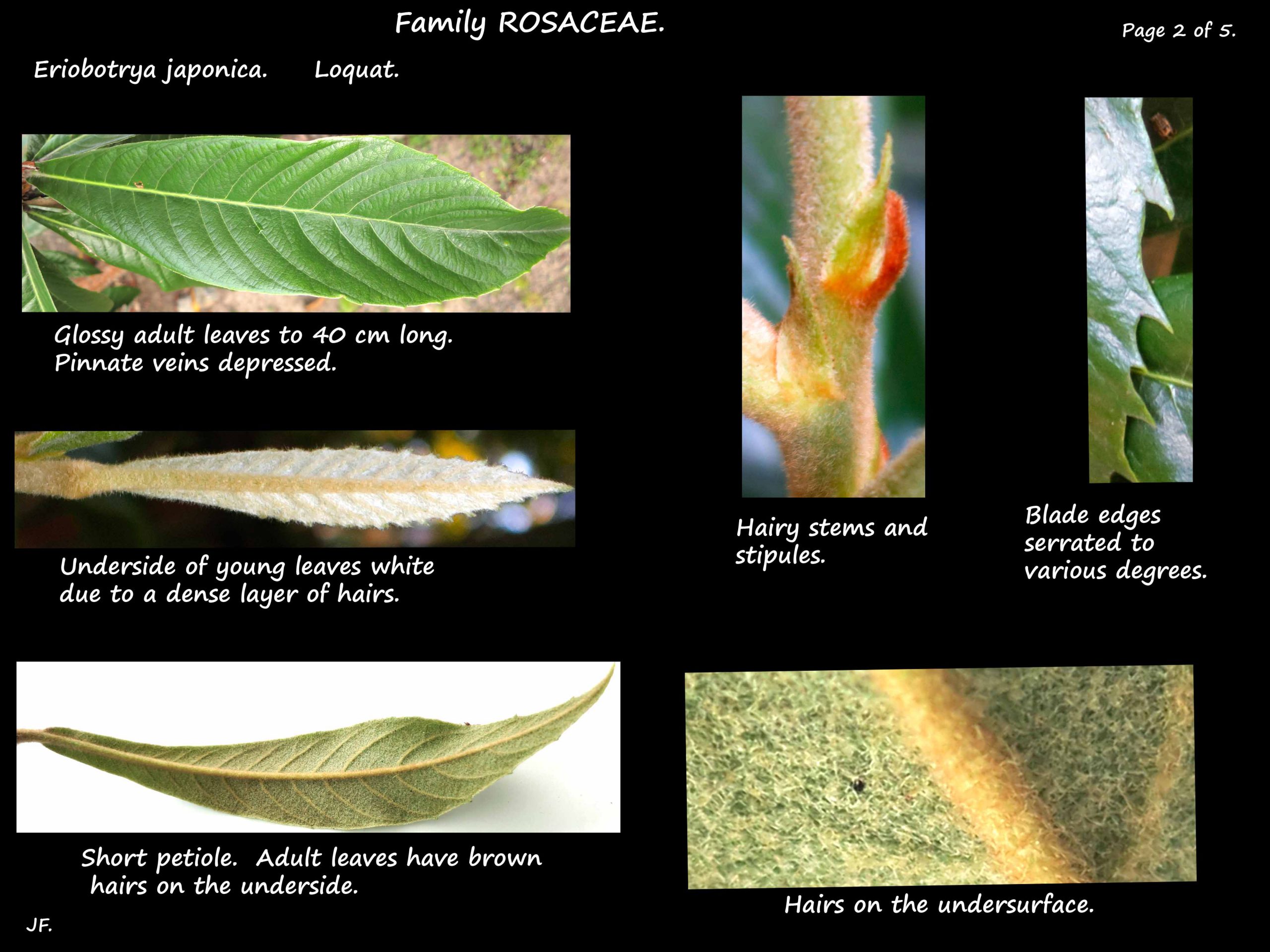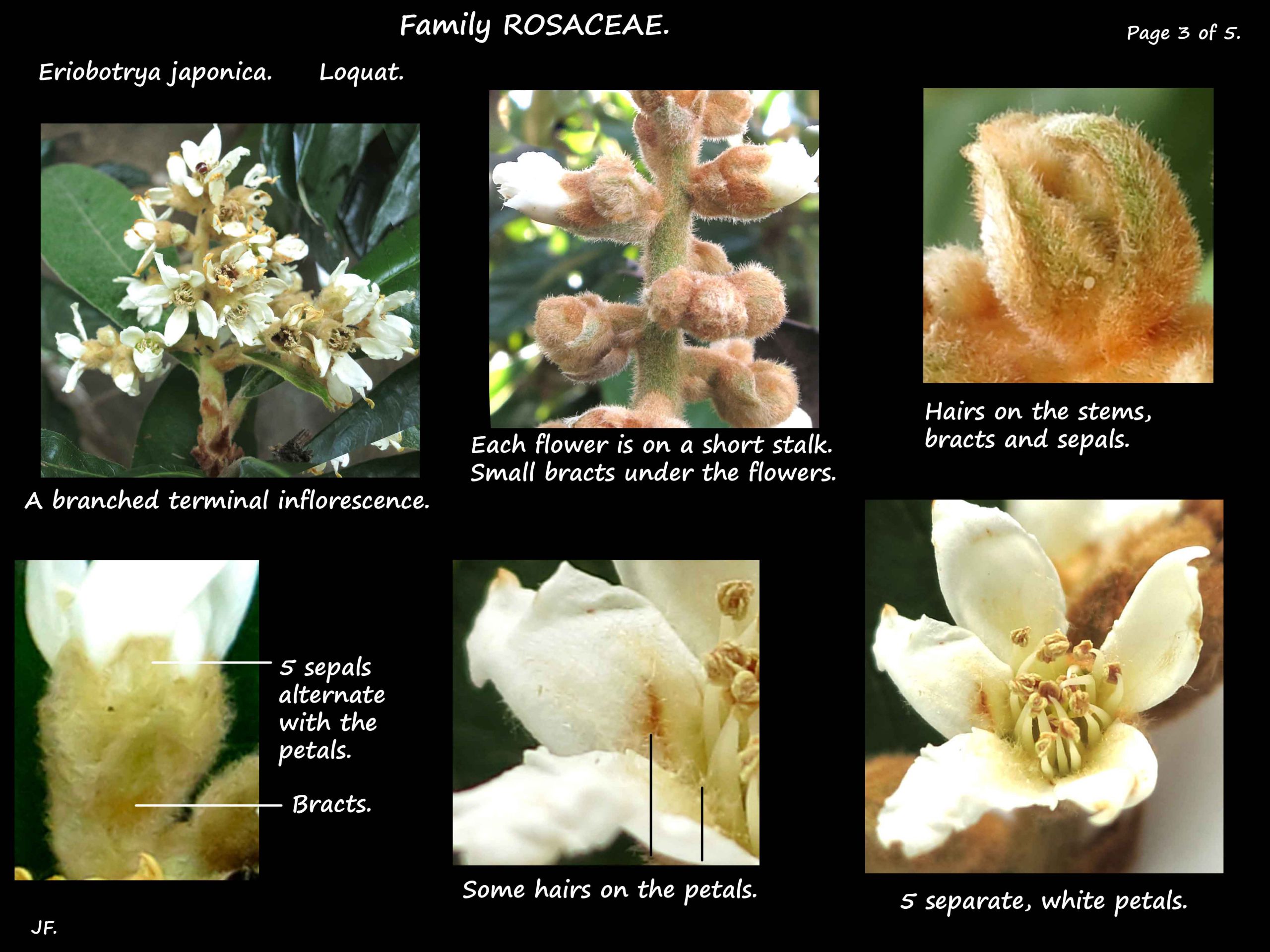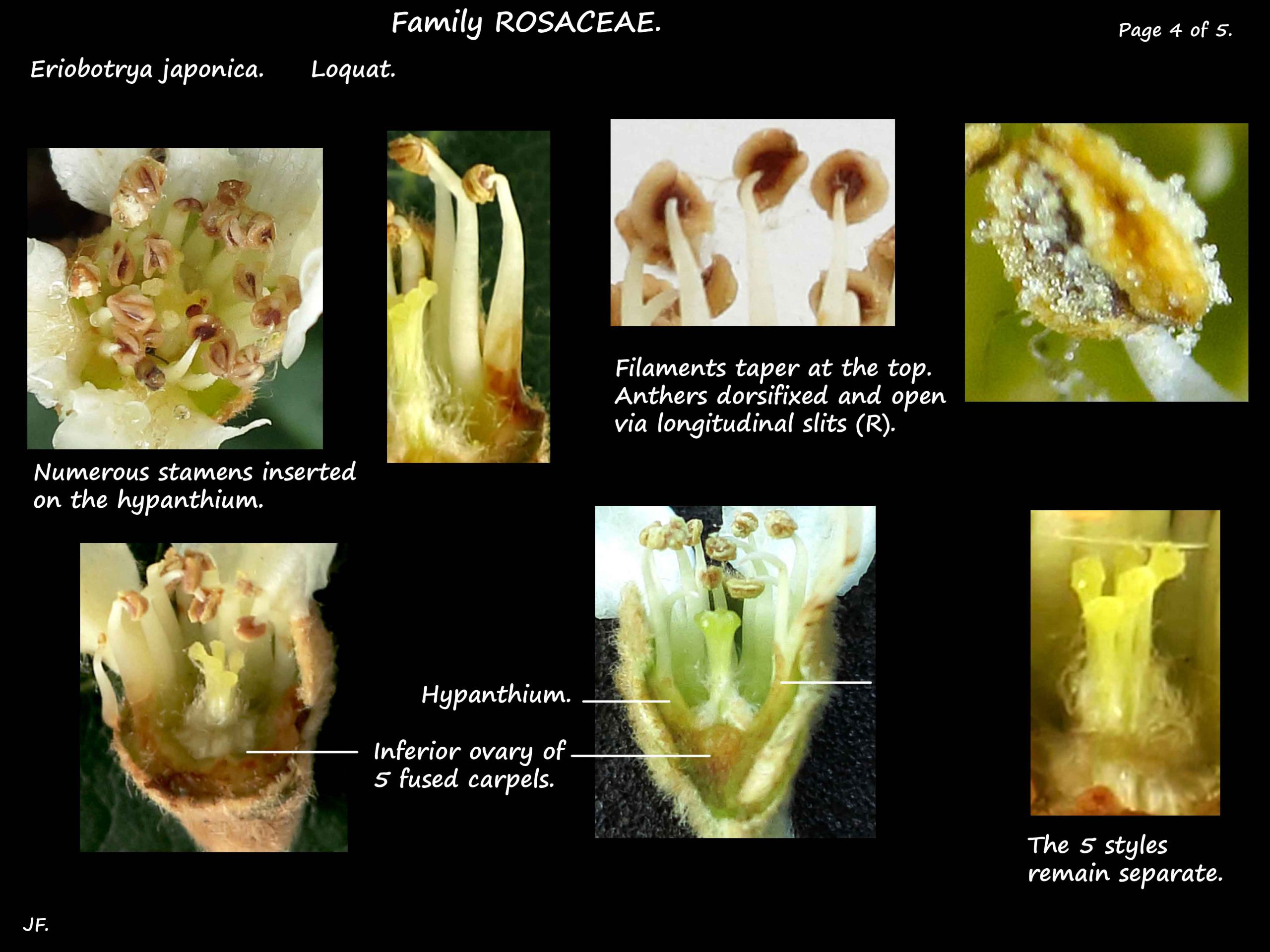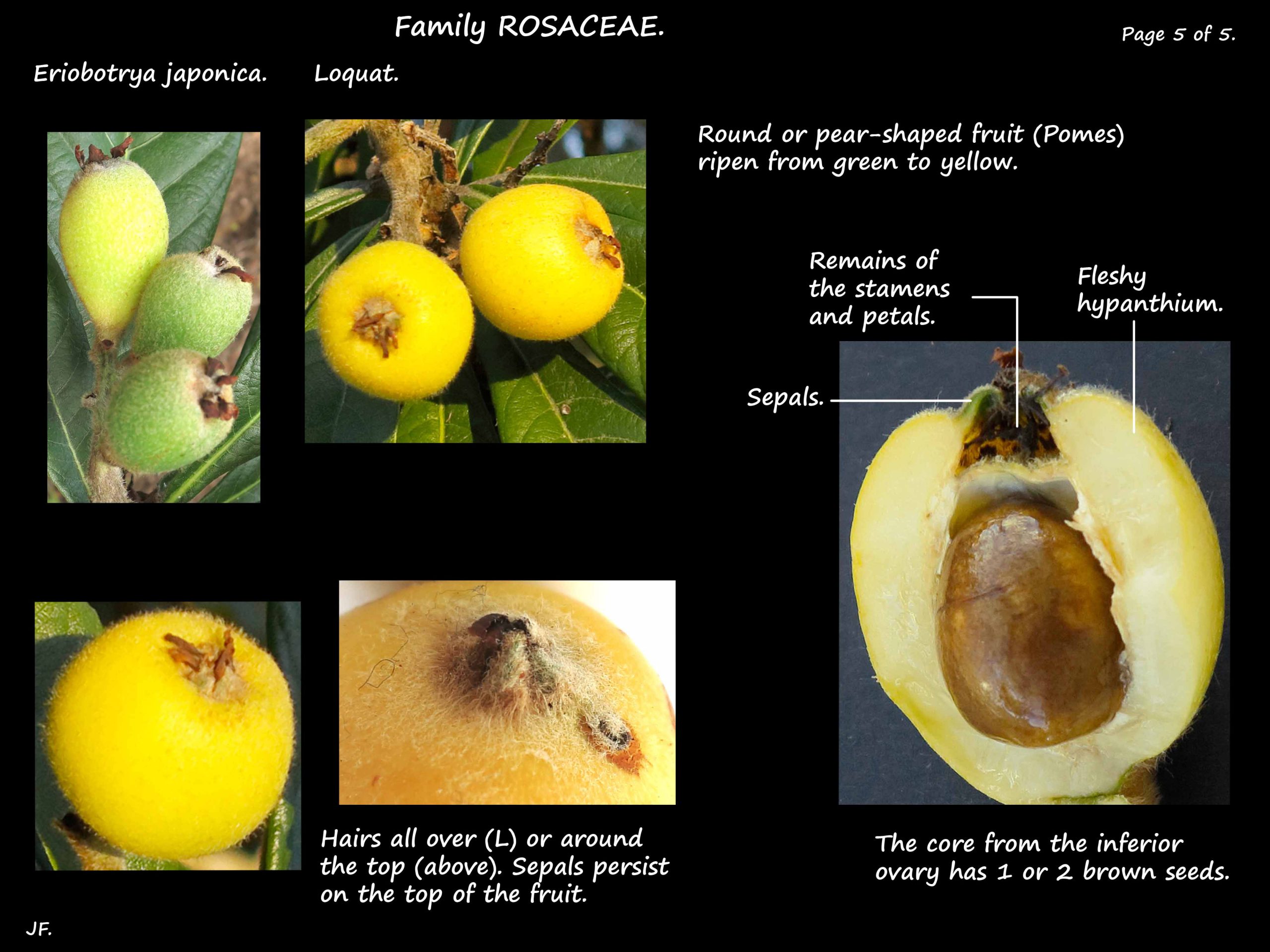Eriobotrya japonica – Loquat.
Family Rosaceae > Subfamily Amygdaloideae.
The Loquat tree has become naturalised in Australia.
It grows as a large shrub or small tree often about 3 m high.
It has a short trunk and the lower branches may be almost on the ground.
All parts are covered with hairs especially new growth and inflorescences.
The simple, evergreen leaves are alternately arranged in a spiral.
They are from 10 to 40 cm long.
The leaf buds have small scales and there are 2 stipules.
The leaf bases taper to a short petiole sometimes only a few mms long.
Young leaves have a dense layer of pale hairs on both surfaces.
In older leaves the hairs rub off the upper surface and it becomes a shiny deep green.
The hairs on the lower surface become a rusty colour.
Leaf edges are serrated to various degrees and the pinnate veins are prominent.
Inflorescences, sometimes branched, are terminal and each flower is on a short stalk.
There are small bracts under each flower.
The stems, bracts and sepals are densely hairy.
The 1 to 2 cm wide flowers have 5 hairy sepals that remain on the fruit.
Sepals alternate with the 5 white petals.
There are about 20 stamens with anthers opening via long slits.
There are 2 to 5 carpels in the inferior ovary and 2 to 5 locules.
The carpels are fused to each other and to the surrounding hypanthium.
There is 1 style per carpel and they are free of each other.
There are 1 or 2 ovules in each locule but not all develop.
The round to pear-shaped fruit are yellowish when ripe and 2 to 4 cm long.
They can be smooth or slightly hairy.
The central core, derived from the ovary, has 1 or 2 (3 to 5) hard brown seeds.
This is surrounded by the white or yellow flesh derived from the swollen hypanthium.
These fruit are known as pomes.
J.F.
